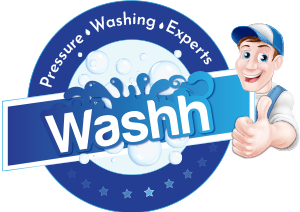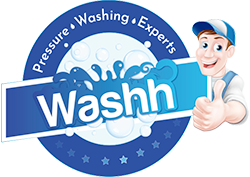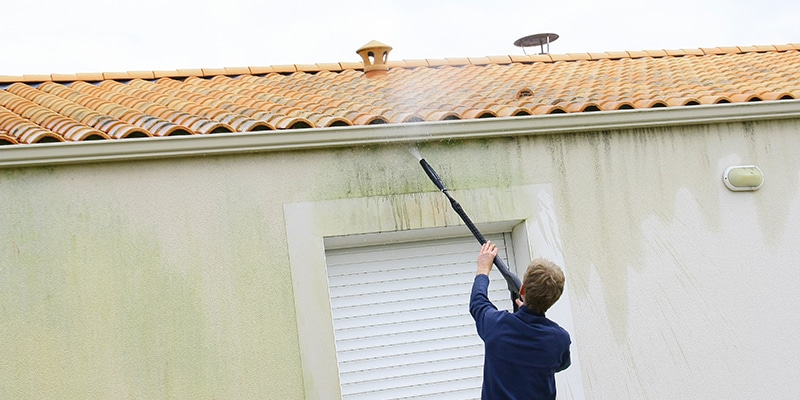Pressure washing lead paint might seem like an easy solution for removing old, peeling paint, but it’s actually a terrible idea. The consequences of improperly handling lead paint are severe, impacting both human health and the environment. It is essential to understand the risks and appropriate methods for dealing with lead paint.
The Dangers of Pressure Washing Lead Paint
Pressure washing is an effective way to strip old paint and prepare your wall for a new coat. However, for lead or lead-based paint, pressure washing can be quite hazardous.
Lead paint poses significant health risks, especially when disturbed. Pressure washing can cause lead particles to become airborne, making them easy to inhale or ingest. These particles can settle on soil, plants, and water sources, creating long-lasting contamination.
In Adults
Lead exposure can have dire consequences for adults, including the following:
- Reproductive Problems. Both men and women can experience reproductive issues. Men may face reduced sperm count and motility, while women may suffer from complications during pregnancy.
- High Blood Pressure and Hypertension. Lead exposure is linked to increased blood pressure, contributing to hypertension and associated health risks such as heart disease and stroke.
- Nerve Disorders. Lead affects the nervous system, causing disorders that can manifest as numbness, weakness, and pain. These nerve disorders can severely impact daily functioning and quality of life.
- Memory and Concentration Problems. Adults exposed to lead may experience difficulties with memory and concentration, affecting their quality of life and productivity.
- Muscle and Joint Pain. Chronic exposure can lead to persistent muscle and joint pain, reducing mobility and overall well-being. This pain can limit physical activity and reduce the ability to perform everyday tasks.
In Children
Children are especially vulnerable to the effects of lead, which include the following:
- Lowered IQ. Lead exposure can significantly lower a child’s IQ, impacting their educational and occupational prospects. The effects on cognitive development can also be long-lasting and irreversible.
- Learning and Behavioral Difficulties. Lead can cause learning disabilities and behavioral issues, making it hard for children to succeed in school and interact socially. These difficulties can lead to social isolation and academic failure.
- Slowed Growth. Physical growth can be stunted, resulting in shorter stature and delayed puberty.
- Hearing Problems. Lead exposure can impair hearing, affecting communication and learning. Hearing loss can further compound learning difficulties and social interactions.
Can You Remove Lead Paint With a Pressure Washer?
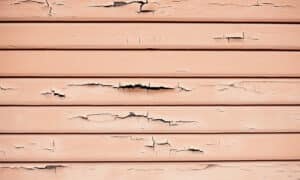 You might wonder, “Can you pressure wash exterior lead paint?” The straightforward answer is yes, you can, but you absolutely shouldn’t. While pressure washing can effectively remove lead paint, it also causes the lead particles to become airborne. These particles can then be inhaled or ingested, posing severe health risks.
You might wonder, “Can you pressure wash exterior lead paint?” The straightforward answer is yes, you can, but you absolutely shouldn’t. While pressure washing can effectively remove lead paint, it also causes the lead particles to become airborne. These particles can then be inhaled or ingested, posing severe health risks.
Pressure washing lead paint can also lead to widespread contamination. Lead particles can travel significant distances and settle on neighboring properties, public spaces, and water sources. This contamination can have significant environmental impacts, affecting plants and animals and potentially entering the food chain.
Why You Shouldn’t Power Wash Lead Paint
Power washing lead paint is hazardous for several reasons. When high-pressure water hits lead paint, it breaks into tiny particles easily dispersed into the air. These airborne particles can be inhaled or can settle on nearby surfaces.
1. Health Risks
The primary concern with power washing lead paint is the risk to human health. As previously discussed, inhalation or ingestion of lead particles can lead to serious health issues. The health risks extend beyond the immediate area, potentially affecting anyone who comes into contact with the contaminated environment.
2. Environmental Contamination
Lead particles can settle in the surrounding environment, contaminating soil and water. This can have long-term ecological impacts. Contaminated soil can impact agriculture, leading to lead entering the food supply and affecting human health.
3. Legal and Regulatory Issues
Improper handling of lead paint can lead to violations of environmental protection laws, resulting in hefty fines and legal consequences. Regulatory agencies like the EPA have strict guidelines for dealing with lead-based paint to prevent these risks.
Do RRP Requirements Apply to Pressure Washing Lead-Based Paint?
The Renovation, Repair, and Painting (RRP) Rule, established by the Environmental Protection Agency (EPA), requires contractors to follow specific procedures when dealing with lead paint. This rule aims to protect against lead poisoning, particularly in homes and buildings built before 1978.
While the RRP Rule does not deem pressure washing a prohibited practice, containment requirements apply. Before pressure washing, it is essential to isolate the work area to prevent dust, debris, and wastewater from leaving the premises. It is also important to protect the containment’s integrity by preventing the displacement and tearing of any plastic or impermeable materials. Installation of the containment should occur in a way that does not obstruct egress in an emergency.
The Proper Way to Do Lead Paint Cleaning
While state and local ordinances may contain more specific guidelines, here are the steps to safely and correctly remove lead paint.
1. Containment
Seal off the work area to prevent the spread of lead particles. Use plastic sheeting and tape to cover floors, furniture, and other surfaces.
2. Protective Gear
Wear appropriate protective gear to prevent lead exposure. This includes masks, gloves, and coveralls.
3. Wet Methods
Use wet methods to minimize dust. Wet sanding or chemical stripping can be effective alternatives to pressure washing. These methods reduce the risk of creating airborne lead particles.
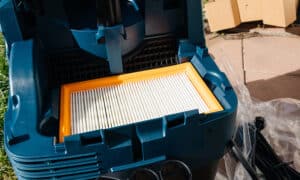 4. HEPA Vacuums
4. HEPA Vacuums
Utilize HEPA-filtered vacuums to clean up dust and debris. These vacuums are designed to capture fine particles, including lead dust, ensuring thorough cleaning.
5. Proper Disposal
Dispose of lead-contaminated materials according to local regulations. Do not burn or bury lead paint debris, as this can release toxic lead into the environment. Proper disposal is essential to prevent further contamination.
Exercise Caution
Pressure washing lead paint is not a good idea without the proper precautions. Both adults and children can suffer severe health effects from exposure to lead. Moreover, lead particles can contaminate the environment. While pressure washing may seem like a quick fix, it is best to follow the regulations when removing lead paint.
Hiring a professional pressure washing company is one way to ensure proper handling and operation. Washh offers residential and commercial pressure washing services. Call us today at 704.321.8000 or contact us online for a free estimate!
RELATED ARTICLES:
- How Does Professional Pressure Washing Save Money In The Long Run?
- How Important Is Parking Lot Striping For A Commercial Establishment?
- 7 Tips To Clean A Car With Pressure Washer
